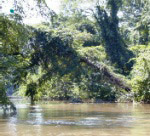Agency to Require Progressive Stormwater Controls for Washington, D.C.
 The U.S. Environmental Protection Agency issued a proposed permit to the District of Columbia requiring the district to continue improving its Municipal Separate Storm Sewer System (MS4) program for controlling stormwater runoff. EPA is accepting comments on the permit until June 4.
The U.S. Environmental Protection Agency issued a proposed permit to the District of Columbia requiring the district to continue improving its Municipal Separate Storm Sewer System (MS4) program for controlling stormwater runoff. EPA is accepting comments on the permit until June 4.
“The innovations in this new permit are vital to restoring and protecting the health of local waterways in the district as well as the Chesapeake Bay,” said Shawn M. Garvin, EPA mid-Atlantic regional administrator. “We all need to do our part, and this permit can serve as a model to other municipalities for preventing runoff from washing harmful pollutants into streams and rivers in the Bay watershed.”
Medium and large MS4s such as the district’s are required by federal law to have permits covering their discharges. The permit announced on April 21 requires the district to take progressive steps that were not required by the old permit issued in 2004, including:
- implementing a sustainable and enforceable approach to promoting low-impact development and green infrastructure (enhanced tree planting, green roofs, and water reuse onsite).
- complying with strict discharge limits, and new performance standards requiring 90 percent on-site retention of storm flows at non-federal facilities for new development, redevelopment and retrofit projects, to avoid pollutant runoff and stream damage.
- increasing monitoring of total maximum daily loading (TMDL) or “pollution diet,” for impaired waterways, including the Anacostia and Potomac rivers, Rock Creek and the Chesapeake Bay.
- controlling and reducing trash through enhanced street sweeping and implementing the Anacostia River TMDL for a “Trash Free Potomac” by 2013.
The new permit conditions are necessary because large portions of impervious surfaces such as roads, rooftops and parking lots in the district channel stormwater directly into local streams and rivers. Improperly managed stormwater runoff from the district can damage streams, cause significant erosion, and carry excessive nitrogen phosphorus, sediment, toxic metals, volatile organic compounds, and other pollutants downstream and into the Chesapeake Bay.
Following the close of public review, EPA will prepare a response and make any necessary modifications to the permit to address public comment. EPA expects to finalize the permit within three months of the close of the public review.
Comments can be sent to Garrison Miller, U.S. EPA Region III (3WP41), Philadelphia, PA, 19103-5103; or Miller.Garrison@epa.gov.